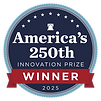States should increase the availability of public charter schools
- Jason Mercier

- Apr 29, 2024
- 3 min read
Study after study continue to show that charter schools are demonstrating positive performance outcomes for students. It is time for states like Washington, with artificial caps, to allow these public school alternatives to increase to meet market demand.
Charter schools are tuition-free schools that are publicly funded but independently run. Most charter schools are exempt from many state laws and regulations but are subject to a contract that includes goals, fiscal oversight, and accountability. If charter schools don't perform, they can be closed. However, charter school laws vary from state to state.
While Washington, for example, allows public charter schools, the law is so limiting that it produces an artificial cap on the number of students who can attend.
Despite the claims of opponents, charter schools are public schools. They don't pick and choose students, and often they serve more underserved students than local district schools and achieve higher outcomes than traditional public schools.
Studies continue to show that public charter schools are making a positive difference in students' lives. That’s the main conclusion from Stanford’s Center for Research on Educational Outcomes (CREDO) 2023 analysis. The CREDO study has been produced three times – once in 2009, again in 2013 and the latest version in 2023.
More than 3.7 million students across 43 states attend charter schools, including in Idaho and Washington. Montana recently legalized public charter schools.
The latest CREDO report shows increases in outcomes for just about every student category in nearly all states. The typical charter school student had math and reading gains that outpaced peers in traditional public schools. In math, charter schools advanced learning by an additional six days. In reading, charter school students advanced 16 days of learning each year.
While these numbers are national averages, certain state-by-state data shows even stronger gains. Idaho’s charter school students gained an additional 17 days of learning in reading. Washington’s advancement approached 30 days. In Math, Washington students advanced almost 40 days while Idaho students advanced eight.
Charter schools in Idaho continue to have an impressive record. There are more than 70 statewide, and some are listed as among the top schools in the nation. In 2024, Idaho adopted “The Accelerating Public Charter Schools Act” to remove some of the regulatory burden on charter schools to allow administrators and educators more time to focus on student outcomes.
A press release by Idaho’s Governor Little said this about the new law:
“This bill cuts red tape around supporting charter schools in Idaho through best practices, development, and educational and operational assistance. It gives more flexibility for the high performing charters of Idaho and more support to charters that are struggling and need more guidance.”
Though limited in number, charter schools are also performing well in the Evergreen State. As reported by Washington State Wire:
“Washington’s charter school students are scoring similar or better than their traditional public school peers, according to a new report released by the State Board of Education. The report, which analyzes data from the 2022-2023 school year, also found Black and Hispanic students, English learners and children from low-income households are consistently performing better in charter schools than in traditional public schools.”
Mountain States Policy Center believes that education choice means an all of the above approach – traditional public schools, charter schools, magnet schools, micro-schools, homeschooling, and more.
Along with increasing access to additional education choice options, policymakers in all states should continue to embrace charter schools and act to enhance their ability to meet the needs of students and families who are looking for alternative education opportunities.








Comments